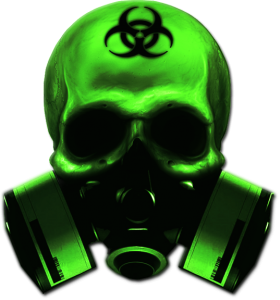Are Your Favorite Cleaning Products Toxic?
Share

Most people go to the store and pick up the same name-brand cleaning products over and over again without any thought about the harmful chemicals found in almost all of them. It’s actually quite scary to think how many toxins are introduced into your house regularly by the products that are supposed to keep your home clean. To help you make a better choice, we wanted to share some of the most common health issues caused by these common toxic chemicals found in most name-brand cleaners.
A recent investigation by the Environmental Working Group into 2,000 common cleaning products in the United States found serious health issues caused by many of them. Among the most concerning findings, they concluded that asthma and other respiratory issues were the direct result of fumes from many cleaning products. The EWG also found carcinogenic impurity 1,4-dioxane and formaldehyde were very common ingredients in most name-brand cleaning supplies. They also cited a 2010 study by the New York State Department of Health that found children born to mothers that worked cleaning jobs while pregnant were significantly more likely to have birth defects and developmental issues.
Worst of all for consumers here in the US, the study concluded, “Despite these health concerns, cleaning product labels often do not give consumers enough information about their ingredients to allow people to make informed decisions on which ones are safer and which ones might harm their health.” This is the scariest part of the whole report. Major corporations can fill these common cleaning products with known toxins and carcinogens without having to let us know all the potential health hazards.
Asthma & Other Respiratory Issues
Asthma and respiratory issues are among the most common issues associated with toxic household cleaners, since many of them are sprays or produce fumes during normal use. There are many toxic chemicals to look for in your household cleaners if you are looking to avoid asthma or respiratory issues. The most common include petroleum distillates, ammonia, nitrobenzene, formaldehyde and chlorine bleach. These have all been proven in many studies to cause serious respiratory issues with regular exposure. Check your cleaning products today and get rid of any that contain these harmful, toxic chemicals.
As far back as 1986, there were clear studies showing the serious concerns with the toxic chemicals in many popular household cleaners. Reisz and Gammon (1986) found that a mix of household ammonia and bleach was causing a life-threatening form of pneumonia. The study concluded that the issue was most likely more widespread and that common household cleaning products with ammonia and bleach were likely a common cause of the respiratory disease that needed more much focus and attention.
We located another troubling study for those in the household cleaning industry. The recent study found an increased risk of asthma among Spanish indoor cleaners. They found that workers in the cleaning industry were 1.7 times more likely to develop asthma as a result of their regular exposure to toxic chemicals. The study found it was even worse for cleaners of private residences, with them being 3.3 times more likely to develop asthma. Over half of all the cleaners involved in the study reported some kind of recent respiratory issue. They concluded, “The asthma risk of home cleaners was mainly associated with kitchen cleaning and furniture polishing, with the use of oven sprays and polishes.”
The more you research these common cleaning products, especially aerosol cans, the more you see clear reason to remove as many of them from your life as soon as possible. They continue to be linked to many of common respiratory diseases.
Allergies, Skin Rashes & Irritations
Allergic reactions, like skin rashes and general skin irritations, are also among the most common issues associated with toxic household cleaners. Many times, the chemical reaction that provides the cleaning power is what also wreaks havoc your skin, leaving it dry and itchy or worse with regular use.
The EWG found, “Ordinary cleaners can cause some people to suffer mild to severe allergic reactions of the skin, eyes and lungs. In rare cases, these reactions can require hospitalization. Some cleaning products contain chemicals that can trigger an allergy by themselves, while others have ingredients that can combine with proteins to form “haptens” that trigger reactions (Chipinda, 2011).”
The same investigation found that many allergic reactions were caused by the mix of mystery chemicals being used as fragrances in common household cleaners. They cited studies that showed overwhelming evidence of the assortment of health issues caused by these fragrances, but the most common was allergic reactions and skin irritation.
The worst part about the fragrances that name-brand companies use is that they are considered trade secrets, meaning that the chemical formulas do not have to be included on the listed ingredients. With the many of the toxic name-brand cleaners, you will simply be left wondering what kind of chemical concoction created that nice little smell.
Cancer
The scariest studies by far are those that now link the common chemicals found in household cleaners to many different types of cancer.
Many studies link Formaldehyde (also called formalin) to cancer, and the World Health Organization now lists it as a known carcinogen. Unfortunately, it is a common ingredient in many household cleaning products. The EWG notes a troubling trend where formaldehyde is not a listed chemical on the ingredient list for common cleaners, but they add preservatives (like2-bromo-2-nitropropane-1,3-diol or bronopol) that release formaldehyde vapors. They found the presence of this type of formaldehyde in popular brands Comet, Pine-Sol and Simple Green, among many others.
The Organic Consumers Association recently published their review of the toxic chemicals in household cleaning supplies and the common health issues they cause. They added near the end of the section covering the general toxicity of many common cleaners by saying that even cleaners with low acute toxicity can be the most carcinogenic. Diethanolamine (DEA) and Triethanolamine (TEA) were the worst offenders of these common chemicals. They say, “When these substances come in contact with nitrites, often present as undisclosed preservatives or contaminants, they react to form nitrosamines – carcinogens that readily penetrate the skin.” They also caution to not use products with 1,4-dioxane, etholoxylated alcohols and butyl cellosolve (aka ethylene glycol monobutyl ether). All of these chemicals are known neurotoxic and can cause damage to the nervous system and brain, as well as cause cancer.
There are not enough studies to definitively link limited regular use of cleaning products with known carcinogens, but the EWG investigation did cite a retrospective study by the Silent Spring Institute of 1,500 Massachusetts women. Half of the women in the study had been diagnosed with breast cancer. The women that reported the most frequent use of cleaning products, air fresheners, and mold or mildew control products were the most likely to have been diagnosed with breast cancer. This is simply one in-depth study and the EWG does add the study noted the possibility that the responses may have been impacted by some of the women’s pre-established beliefs that the chemicals contributed to the development of their disease.
We fully support all the money and research that goes into finding cures for cancer, but that does not go far enough. We need to work harder to remove the common products that cause cancer from our life. As more people learn about how many toxic carcinogens are loaded into name-brand cleaning products, it will become easier to fight cancer on this front. The exact same can be said for all the diseases caused by these harmful chemicals. We will accomplish more with less if we fight the root causes of many of the most common diseases.
Time For A Change
It should be clear that many of the name brand cleaning products are a health hazard to your family. There’s a reason why so many of them come with warning to keep them out of reach to children and pets. The only problem is the children and pets can then absorb these same chemicals from the floor cleaner when they play on the ground or from the bathroom cleaner when they bath. Many people have used most of the same cleaning products their whole life and it’s hard to break that habit. Maybe you’ve even grown to love the smell or feeling of your favorite cleaning products.
People often say it’s overwhelming when they think about where to start if they have used the same product for a long time and they have a bunch of common questions. What products are clean? What products are non-toxic? What safe cleaning products still do a great job of cleaning? What the best for my kitchen? What’s the best for my bathroom? Etc?
The good news is that you don’t need an arsenal of toxic chemicals to keep your home and office clean. At Green Virgin Products, we wanted to offer a simple answer to many of those questions with our GVP Formula 433 All-Purpose Cleaner. It will deliver a safe, effective, all-purpose clean for almost any cleaning job around the house. It works great in the kitchen, bathroom as well as on any washable surfaces. It’s odorless, hypoallergenic and 100% non-toxic. You won’t miss the name-brand after your first GVP Formula 433 clean, and you’ll be removing a common source of toxins and carcinogens from your life forever!
Get stocked up on the GVP Formula 433 All-Purpose Cleaner. Save money with a special discount. Use coupon code: 10off – and get 10% off your order today!



